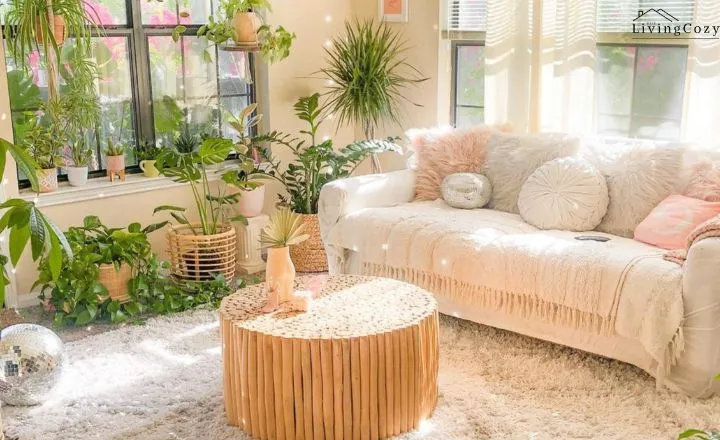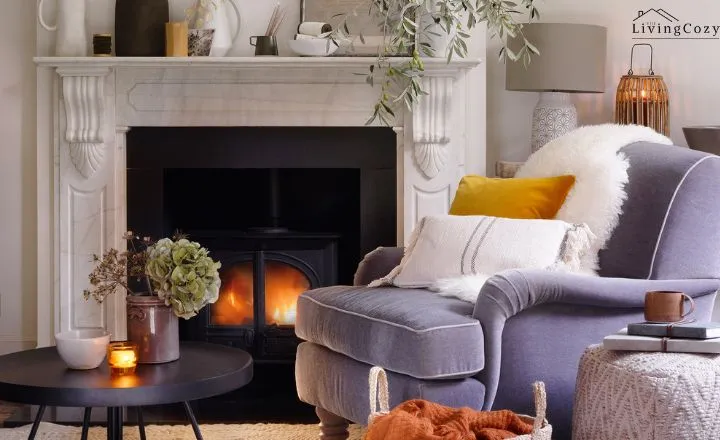Many of us have experienced the frustration of having a perpetually cold room that just never seems to warm up, no matter what we do. Whether it’s a drafty bedroom, a chilly office, or a stubbornly frigid living room, the struggle to keep these spaces cozy can be all too real.
In this article, we’re going to unravel How To Warm An Always Cold Room From clever design tricks to innovative heating solutions, we’ll explore practical and effective methods to banish the chill from your living space once and for all.
5 Reasons Why Your Room Feels Cooler:

Windows:
Multiple windows in your room can be a great advantage. It allows for more natural light to enter the room, making it feel more spacious and open. Having multiple windows can provide better ventilation, allowing fresh air to circulate throughout the room.
With multiple windows, you also have the opportunity to enjoy different views from various angles within the room. This can create a sense of connection with the outdoors and bring a calming effect to the space.
Improper sunlight:
If your room has improper sunlight, there are a few things you can do to improve the situation. One option is to invest in light-filtering or blackout curtains to control the amount of natural light entering the room.
You can also consider rearranging your furniture to maximize the available sunlight and minimize any obstructions. Adding mirrors to the walls can help reflect and distribute sunlight throughout the space.
Artificial lighting, such as floor lamps or overhead lights, supplement the natural light in your room. LED bulbs that mimic natural daylight can be particularly effective in creating a brighter and more inviting atmosphere.
If possible, consider adding plants that thrive in low-light conditions to bring some greenery into your space while adapting to the limited sunlight available.
Paint:
Painting the walls and ceiling of your room can completely transform the look and feel of the space. A light, neutral color can make the room feel more spacious and airy, while bold, vibrant colors can add personality and energy.
Consider using different shades to create visual interest, such as a darker accent wall or a contrasting ceiling color. Before starting the painting process, be sure to properly prepare the surfaces by cleaning and priming them. Use high-quality paint and tools for a professional-looking finish.
Don’t forget to protect floors and furniture with drop cloths, and take your time to ensure even coverage. With some careful planning and attention to detail, painting your room can be a rewarding DIY project that adds value to your home.
High ceilings:
A high-ceiling room can make the room feel cooler, especially in warmer climates. This is because hot air rises, so in a high-ceiling room, the hot air will naturally accumulate near the ceiling, leaving the lower part of the room feels cooler.
With more space between the floor and ceiling, there is better air circulation which can help distribute cool air more effectively.
It’s important to note that while high ceilings can contribute to a cooler feeling in the room, other factors such as insulation, ventilation, and sunlight exposure also play a significant role in determining the overall temperature.
It’s always best to consider all these factors when trying to regulate the temperature of a space with a high ceiling.
Keep the door closed:
Keeping the door closed is important for maintaining privacy, security, and temperature control in a space.
By keeping the door closed, you can prevent unwanted interruptions, maintain confidentiality during meetings or discussions, and create a barrier against noise and distractions.
Closing the door can help regulate the temperature within a room by containing heat or cool air, leading to energy savings and a more comfortable environment.
How to Warm an Always Cold Room?

They use a space heater, which can quickly and efficiently heat a small area. The room by sealing any drafts around windows and doors, as well as adding insulation to the walls and ceiling.
Heating panels or electric blankets to provide targeted warmth in specific areas of the room. Consider using rugs or carpets on the floor to add an extra layer of insulation and warmth. You can effectively warm up an always-cold room and create a more comfortable living environment.
Close the windows:
Closing the windows is an important step to ensure the security and privacy of your home. By keeping the windows closed, you can prevent unauthorized access and potential break-ins.
Closing the windows can help maintain a comfortable indoor temperature by preventing heat or cold air from entering or escaping.
Fill up the gap to restrict the cold breeze Sunlight:
With the cold breeze and sunlight, you can consider using insulating curtains or blinds. These can help to block out the cold air and light, keeping your room warmer and more comfortable.
Using weather stripping around windows and doors can also help to prevent drafts and keep the cold air from entering your home.
Keep the room heater in the corner:
Keeping the room heater in the corner can be a good idea for several reasons. Placing the heater in a corner helps to distribute heat more evenly throughout the room, as it allows for better airflow and prevents heat from being concentrated in one area.
Placing the heater in a corner can also help to save space and keep it out of the way, reducing the risk of accidents or obstruction.
Conclusion How To Warm An Always Cold Room:
Understanding, How To Warm An Always Cold Room? Warming up an always cold room can be achieved through a combination of insulation, proper heating, and strategic use of accessories such as rugs and curtains.
The walls and windows, and using a space heater or central heating system effectively, it is possible to create a cozy and comfortable environment in even the chilliest of spaces.
Warm colors and textures in the room decor can contribute to a sense of warmth and coziness. With these practical tips and techniques, anyone can transform their perpetually cold room into a snug retreat that provides comfort and relaxation all year round.
FAQ’s:
How to sleep colder?
Try using lighter bedding materials such as cotton or bamboo sheets, which are more breathable and can help regulate your body temperature.
How do you make a cold room feel warmer?
Adding rugs or carpets to the floor can help insulate the room and prevent heat from escaping through the floorboards.
How can I get warm in bed fast?
To get warm in bed quickly, try using a heated blanket or an electric mattress pad to provide instant warmth. You can also use a hot water bottle or a microwavable heating pad to warm up your bed before getting in.
How to feel warm in a cold room?
Dressing in layers can help trap body heat and keep you warm. Wearing thermal underwear, a sweater, and a cozy blanket can make a big difference.
How to get warm in a cold room?
An effective way to get warm in a cold room is by drinking hot beverages such as tea, coffee, or hot chocolate. These can help raise your body temperature from the inside out.


